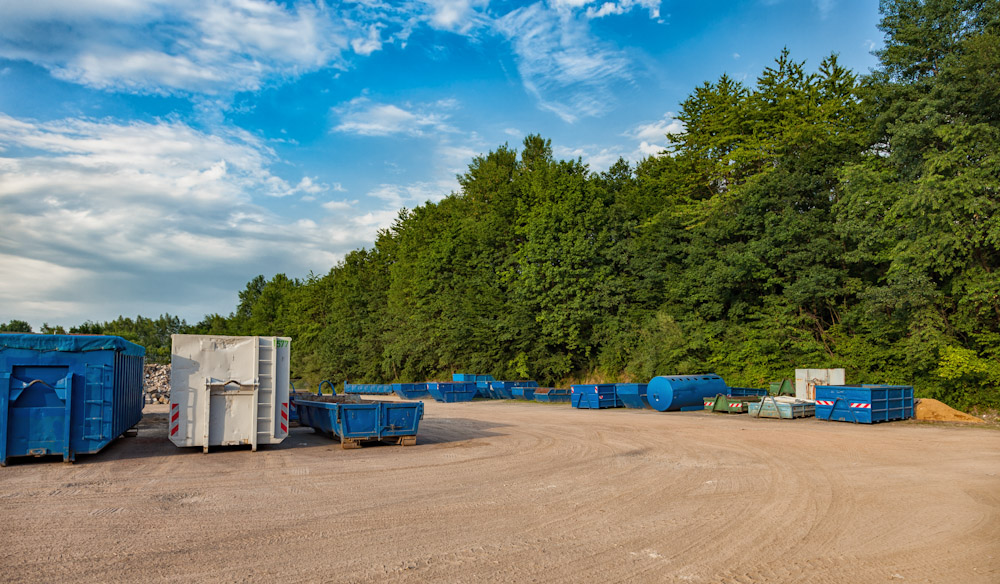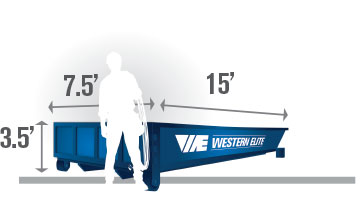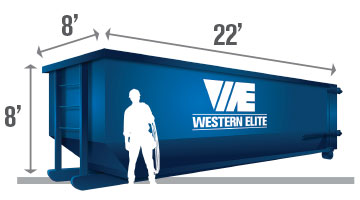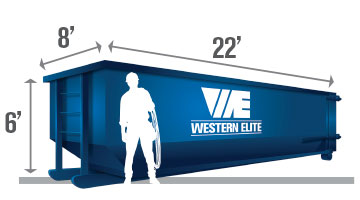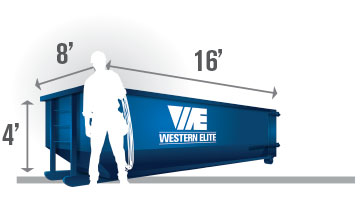Waste disposal has come a long way over the years. Have you ever heard the phrase, “Don’t throw the baby out with the bathwater,” and wondered what that means? We have the answer to that and more as we take a look at how waste is disposed of around the world, and how it has evolved
Globally, 37% of waste is buried in a landfill. Eight percent of that is sent to a sanitary landfill, which is one with a system designed to protect the surrounding environment from leaching into the ground and the air. Why is so little waste disposed of in a sanitary landfill? Good question.
Before Landfills
In the days before landfills, people threw human waste and trash out the window. The same goes for, you guessed it, bathwater. Because waste was simply tossed out the windows of homes and businesses, it became common as early as 1512 to tell people not to throw out something essential (the baby) with someone non-essential (the used bathwater). The catchphrase made sense then because people weren’t bathing babies in stationary sinks or tubs with piped plumbing; they were bathing babies in portable containers and emptying grey water onto the streets outside.
Thankfully, waste disposal improved over time.
- 1920s: Apartment buildings started including an incinerator for residents. A common trash chute, or multiple chutes, were accessible inside the building. Trash was burned, and the ash was typically dumped into swamps. This ended up contaminating groundwater, so new solutions had to be explored.
- 1935: California dug a big hole in the ground for dumping waste. It was periodically backfilled with dirt, and more trash was dumped on top. Open landfills like this cost less than sanitary landfills, a concept that wouldn’t be introduced until the late 1950s.
What Belongs in a Landfill?
A concept we’re still trying to teach today as we offer our dumpster rentals to the community is that not everything belongs in a landfill. Green waste and hazardous materials need to be disposed of separately, not just from each other, but from regular household waste as well. In the early days, everything and anything was dumped.
- Green, or organic waste, consists of plant waste and food waste. We have specific dumpster rentals in Henderson for your green waste needs.
- Hazardous waste includes:
- Motor oil
- Pesticides
- Fertilizer
- Paints
- Electronics
Now, back to how landfills improved!
- 1959: Sanitary landfill guidelines were introduced. It was advised that waste be covered daily with soil, which was much more regularly than before. Decomposing waste produces methane, and to avoid letting all that methane contribute to global warming in the atmosphere, some companies harness the methane via sanitary landfills and convert it into natural gas energy.
- 1965: Solid Waste Disposal Act (SWDA) introduces federal legislation to regulate waste disposal.
- 1976: Resource Conservation and Recovery Act (RCRA) introduced the practice of dividing waste into two categories: hazardous and solid.
- 1979: The Environmental Protection Agency (EPA) continued to fine-tune regulations for landfills to reduce groundwater contamination and the spread of disease.
- 1991: EPA continues its efforts to monitor the effects of waste on groundwater, and develops a protocol for monitoring landfills even after they’ve been completely capped. A common practice now is to offer 30 years of observation after a landfill is capped with plastic. Soil and vegetation are deposited on top and the space is often transformed into parks or open, common use areas.
Selling Waste to China
Did you know that beginning in the 1980s countries, including the United States, could sell and export their waste to be processed in China? It wasn’t until 2018 that China stopped buying and importing the waste of other countries.
Recycling Around the World
Europe leads the charge in recycling, with policy incentives that encourage residents and businesses to properly separate their recyclables. Single-use plastics are discouraged, including plastic bags and plastic straws. Our Henderson dumpster rental business meticulously sorts the waste deposited in our dumpster rentals to ensure proper and efficient disposal and recycling of materials.
Countries Successfully Recycling
- Sweden – Residents use color-coded bags to keep recyclables properly separated for processing. Waste that can’t be recycled is burned, and that energy is converted to combustion energy to provide electricity throughout the country. Recyclables are processed and made into new materials for future use. They’re actually so good at their waste disposal and recycling process they have to import trash from other countries to keep their waste plants working at full capacity to produce electricity.
- Japan – With such a dense population, Japan has to be efficient with its waste management and recycling programs. Even residents in small towns with limited access to recycling and waste management pickup take responsibility for their trash; in 2020 the small mountain town of Kamikatsu was recycling 90% of their waste via a process that entails separating waste in 34 different categories.
- Canada – This country is a leader in recycling tires, which cannot be disposed of in landfills. Canada uses rubber tires to produce asphalt for roads, and surfaces for playground structures. They also put an emphasis on collecting cigarette butts for recycling since, worldwide, they are one of the most common pieces of litter dropped on the ground without a second thought.
- Wales – Over the course of 20 years, their recycling efforts have brought their recycling rate from 5% to 64%. Like other countries, Wales has reduced the production and distribution of single-use products, and it requires residents to separate their household waste for disposal and recycling.
- Colombia – They have an incentive program that actually rewards citizens for recycling. There are machines into which people can recycle PET products (like plastic bottles), and after doing so they are issued a coupon for use in retail or restaurants partnered with the program.
- Indonesia – Residents in need of health care can participate in Garbal Clinical Insurance, a program in which health care is offered in exchange for recyclables. Residents can take waste into the clinic, which the clinic then sells for recycling. With the money earned recycling, the clinic can offer free health insurance.
United States – Compared to these countries and more, the US could be doing better. We’re currently recycling about 34% of what we could be. We have little incentive to recycle, except for the whole, “saving the Earth” bonus.
How can we do better? Dr. Neil Seldman from the Institute for Local Self-Reliance, states, “The only difference I see [between high-recycling communities and low-recycling communities] is that the cities moving toward 90% [recycling] have a very active grassroots network that consistently pushes for increased recycling and, in recent years, zero waste.” As we state on our homepage, our business wants your trust when it comes to providing waste and recycling solutions with our residential and commercial dumpster rentals.

